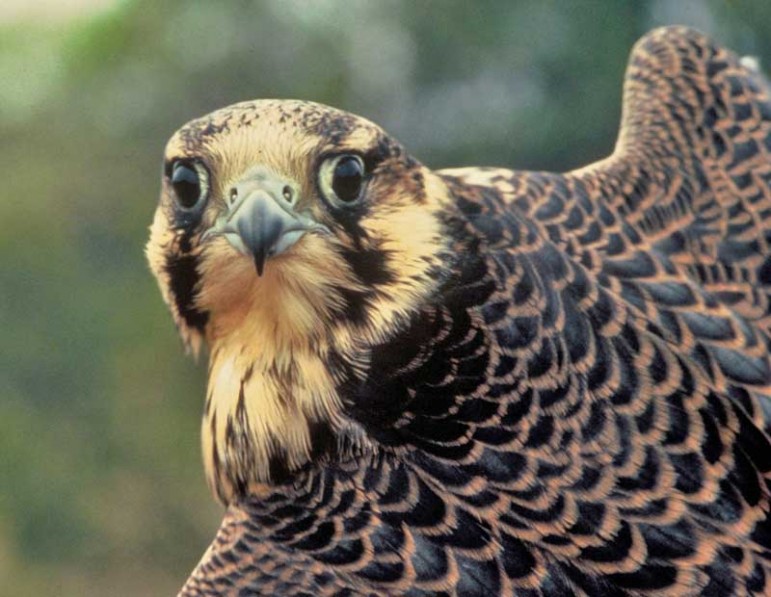
A public closure in Grand Teton National Park at Baxter’s Pinnacle and Descent Gully near the mouth of Cascade Canyon was lifted on Saturday, Aug. 16. The area closure went into effect May 6 to protect an active peregrine falcon nest.
The adult falcons successfully reared four chicks which have now developed wing feathers and are able to fly. While peregrines can lay up to five eggs, this marks the most young ever fledged at a single nest in Grand Teton National Park, according to a a statement released by the park’s public affairs office.
The first successful peregrine falcon breeding in Grand Teton National Park was documented in 1988. Over the years, the number of successful nesting pairs has risen from one in the late 1980s and early 1990s to as many as four pairs in recent years. This year, a fifth nest site was discovered near a cliff area on the north side of Blacktail Butte. For unknown reasons, this new nesting site did not produce any young.
In addition to the Baxter’s Pinnacle nest, one other Teton site fledged three peregrine chicks this year and a third nest fledged one chick, making a total of eight peregrine young fledged at Grand Teton in 2014.
The Baxter’s Pinnacle peregrines experienced little to no human interruption during their incubation and chick-rearing phases thanks to active support from the park’s two authorized concessioners for guided climbing services, and to the cooperation of Jackson Hole’s climbing community that demonstrated responsible behavior and respected the closure, park officials said.
Peregrines are cliff-nesters and can be sensitive to human disturbance, especially during their nesting period. Falcons are territorial and will often abandon nests to defend their territory, which leads to nest failure and low reproductive success.
Decimated by the harmful effects of the pesticide DDT, it is believed that peregrine falcons were virtually eliminated from the greater Yellowstone area by the 1960s. In 1980, efforts to reintroduce peregrine falcons to Grand Teton National Park were initiated in conjunction with similar efforts elsewhere in the western United States.
Between 1980 and 1986, 52 fledgling falcons were released at several sites in the Teton Range. After sufficient recovery was achieved, peregrines were delisted from the endangered species list in 1999. However, peregrine falcons remain a species of interest in Grand Teton National Park. The Baxter’s nest area was first discovered in 2010. This peregrine falcon pair successfully produced one chick in 2010, 2011 and 2013, before fledging four young this year.
The public closure served a second purpose: to also protect climbers from the peregrines as they will defend their nest site by dive-bombing perceived intruders. The peregrine falcon is among the world’s fastest birds, flying at 40-55 mph and diving at more than 200 mph while defending a territory or striking prey.
Seasonal and temporary closures for wildlife protection are common in Grand Teton to protect both wildlife and park users. Entering a posted wildlife closure is a violation that can result in a citation and fine under the code of federal regulations.
